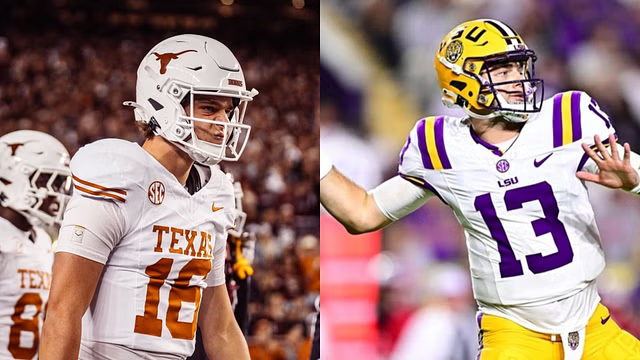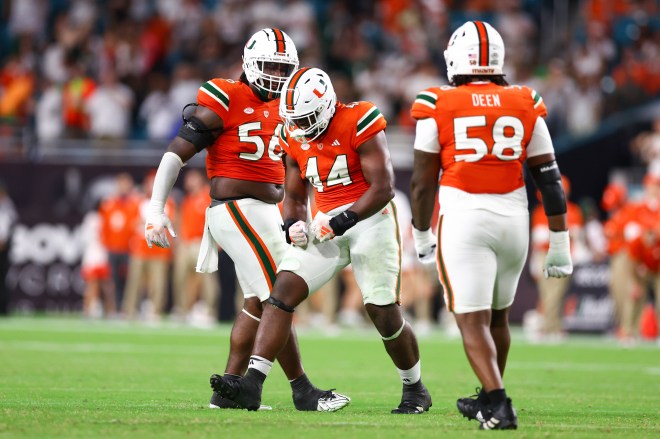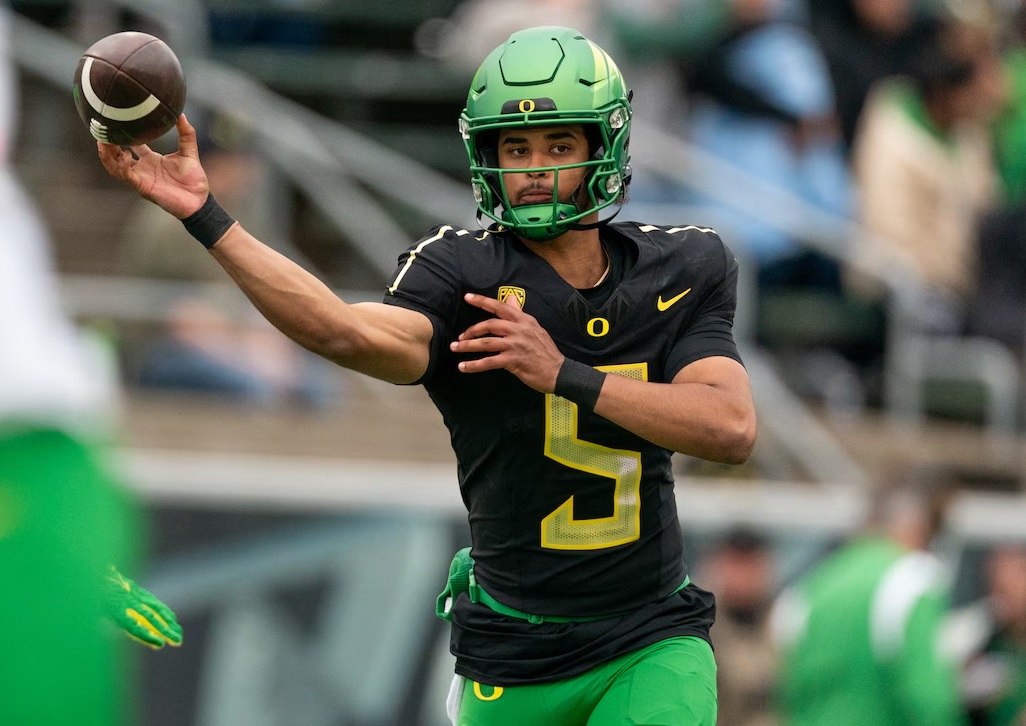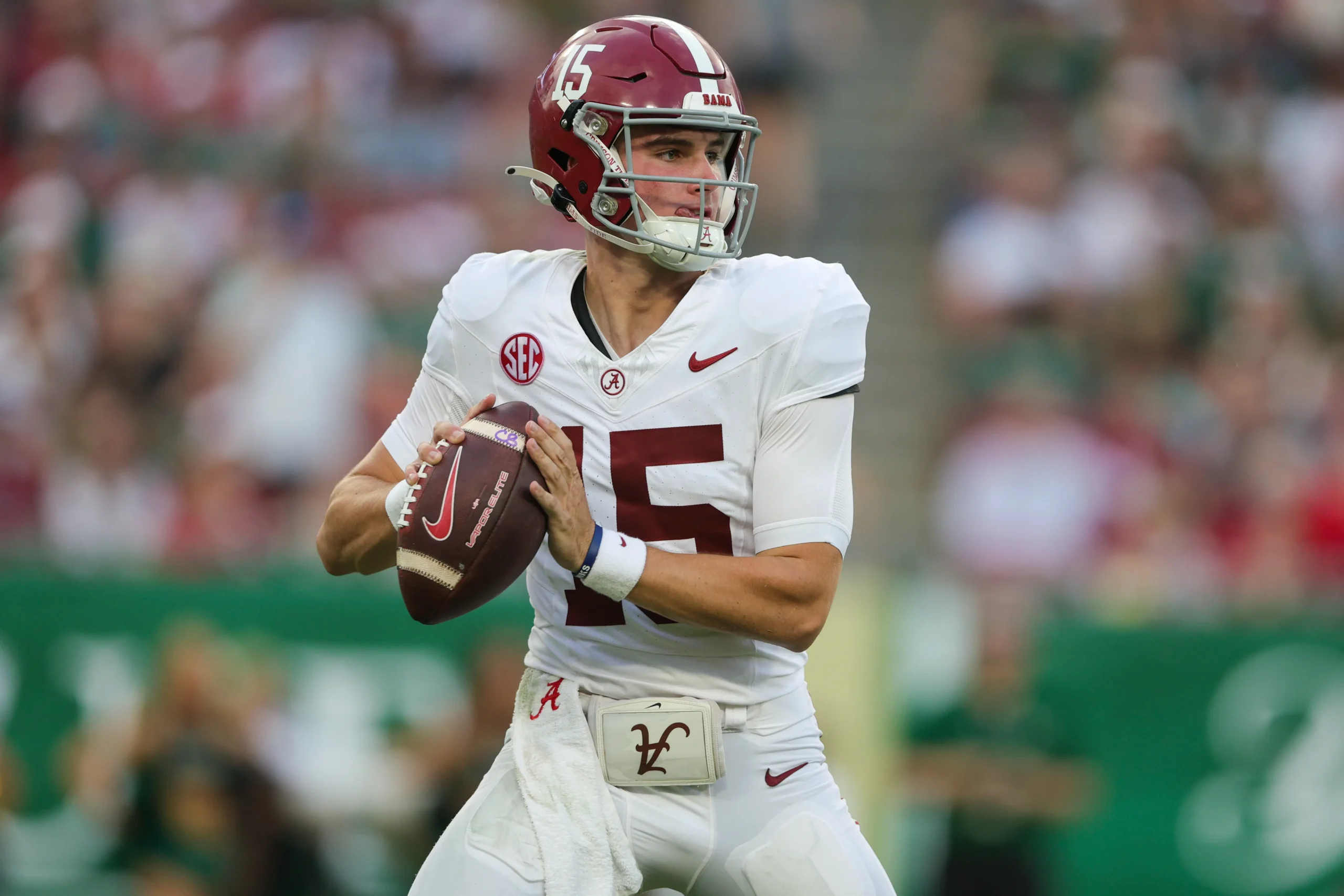By Charlie Campbell.
Send Charlie an e-mail here: [email protected]
Follow Charlie on Twitter @draftcampbell for updates.
This page was last updated April 9, 2020. Follow me @walterfootball for updates.
Guard Class
Early-round talent: C-
Mid-round: C
Late-round: C-
Overall grade: C-
2020 prospects vs 2019
Tristan Wirfs
Chris Lindstrom
Cody Ford
Dalton Risner
Elgton Jenkins
Shane Lemieux
Robert Hunt
Michael Deiter
Solomon Kindley
Logan Stenberg
Nate Davis
Connor McGovern
Dru Samia
Netane Muti
Ben Bartch
Damien Lewis
The guard class last year was solid but not great, while the 2020 NFL Draft is a drop off from 2019. However, the top of the draft is the exception with Tristan Wirfs, who would have been the top guard in the 2019 NFL Draft and would have gone ahead of Chris Lindstrom. After Wirfs, the 2020 class may not have another player who some teams project to guard get drafted before the third round. Shane Lemeieux and Robert Hunt are on the bubble between the second and third rounds. They are on a par with Michael Deiter. Solomon Kindley and Logan Stenberg could be third-round picks who are better than Nate Davis and Connor McGovern. Netane Muti, Ben Bartch and Damien Lewis could be fourth-rounders similar to Samia.
Safest Pick: Tristan Wirfs, Iowa

Previous Picks:
2019: Cody Ford
2018: Quinton Nelson
2017: Forrest Lamp
2016: Sebastian Tretola
2015: Brandon Scherff
2014: Xavier Sua’Filo
2013: Chance Warmack
Looking back, it is too early to pass any judgement on Ford, but he should be fine in Buffalo. Quenton Nelson is the most dominant offensive lineman in the NFL regardless of position, but he was a no-brainer selection. Scherff was a similar easy pick and is one of the better guards in the NFL. Otherwise the rest of the list is disappointing. Lamp has had injuries and has yet to establish himself as a legit starter. Tretola was a bust, so I was wrong on him. Su’a-Filo was a bad pick for the Texans, but he has stuck around as a pro. Similarly, Warmack was a bust for the Titans, but he has played for other teams.
For the NFL, Wirfs has a good skill set with size, length and athleticism. He plays with good leverage as a run blocker and sustains his blocks well. Wirfs sets up pretty well, but he definitely has some issues to clean up in pass protection for taking on NFL edge rushers. Wirfs has an inclination to bend at the waist at times. While he is quick out of his stance, he needs to get more depth in his kick slide to avoid reaching after speed rushers coming around the corner. Wirfs also needs to get better at counter moves to the inside. Although Wirfs has the physical talent to play left tackle, he could better off at right tackle and could be a really good guard.
Biggest Bust Potential: Damien Lewis, LSU

Previous Picks:
2019: Ross Pierschbacher
2018: Scott Quessenberry
2017: Pat Elflein
2016: Cody Whitehair
2015: Jeremiah Poutasi
2014: Chris Watt
2013: Brian Winters
Pierschbacher slipped to the fifth round so that really isn’t a bust. Elflein and Whitehair aren’t world beaters but they are solid pros. I was right on Poutasi as he was a bust for Tennessee and didn’t even make it two years with the club after being a third-round pick. Watt also was a bust while Winters is serviceable but not very good.
Lewis was a solid college guard but I could see him having issues in the NFL. At 6-foot-2 he lacks length and Lewis is not overly athletic. His weight at 327 also is high for a player of his size and keeping his weight in check could be an issue during his career. Lewis had some quality performances for LSU, but also was dominated by Auburn’s Derrick Brown. Thus, I could see Lewis having issues translating to the NFL.
Guard Rankings by Attributes
Pass Protection:
NFL prototype: Quenton Nelson, Colts
- Tristan Wirfs
- Robert Hunt
- Shane Lemieux
- Damien Lewis
- Netane Muti
- Ben Bartch
- Solomon Kindley
- Logan Stenberg
Recap: The NFL is a passing-driven league, so keeping a clean pocket as a pass-blocker is the attribute that the majority of teams consider first. Coaches want the guards to keep defensive tackles from gaining penetration or causing disruption. If the guards are successful, quarterbacks can step up in the pocket to avoid edge rushers. This helps out the offensive tackles significantly. Additionally, good guard play provides better throwing lanes for the quarterback.
As a pass blocker, Wirfs sets up pretty well, but he definitely has some issues to clean up in pass protection for taking on NFL edge rushers. Wirfs has an inclination to bend at the waist at times. While he is quick out of his stance, he needs to get more depth in his kick slide to avoid reaching after speed rushers coming around the corner. Wirfs also needs to get better at counter moves to the inside, and not getting caught by surprise by bull rushes. Because of these issues, some feel Wirfs should be a right tackle or guard in the NFL even though he has the physical talent to play left tackle. As a guard, some of those issues would be reduced significantly, and if Wirfs played guard on an every-down basis he could turn into a superb pass protector.
Hunt has very good feet for a big guy, which is why he played tackle in college. He has a guard’s body, but with his feet and athleticism, he should be a tough interior blocker in pass protection. Improving his ability to bend will help him to pass protect at the pro level.
Lemieux was a solid pass blocker for Oregon and did a good job of protecting Justin Herbert. Lemieux is strong and has the base to handle bull rushes. Improving his ability to take on speed would help him for the next level.
Lewis was a solid pass protector for LSU last year and was reliable to help keep a clean pocket. He can have issues with power and get overwhelmed by mass, so that is what pushes him lower.
Muti is a mixed bag as a pass protector for the next level. He can overextend too far forward, putting his weight over his toes. His balance and footwork need development for taking on pro defensive linemen, but he has the strength to handle bull rushes.
At the Senior Bowl, Bartch was solid in pass protection. He has a solid base and was able to anchor against bull rushes. Speed rushers could give him trouble in the NFL, and he is going to need some developmental time.
Kindley has a good anchor to handle powerful bull rushes, but fast three -echniques can give him problems. Part of his issues in pass protection came from having gotten too heavy. His weight went too far over his toes, and that allowed speed rushers to get the better of him. Improving his weight and ability to block speed rushers will be a big point of improvement for him in the NFL.
Stenberg is similar in needing to improve his ability to handle speed and athleticism. He is strong and stout versus bull rushes.
Run Blocking:
NFL prototype: Quenton Nelson, Colts
- Tristan Wirfs
- Solomon Kindley
- Logan Stenberg
- Netane Muti
- Shane Lemieux
- Ben Bartch
- Damien Lewis
- Robert Hunt
Recap: Guards are the engine of a good running game. They are the most important blockers for opening holes up the middle in addition to pulling or moving on stretch runs. Dominant guards who can open up holes even when defenses know the run is coming provide a mental edge, especially late in games. This is a pretty good class of run blockers.
In the ground game, Wirfs is a plus blocker who can generate movement at the point of attack. He plays with good leverage as a run blocker and sustains his blocks well. Wirfs stays light on his hand to get out quick as a puller. His athleticism and quickness to move is seen with him as a puller, and that is an asset he brings to his NFL team. With natural strength, Wirfs ties up defenders is adept at fighting them out of their gap. There are times when Wirfs overextends and ends up on the ground too often, but he is a capable run blocker entering the next level.
Kindley is a load as a run blocker, and Georgia had a lot of success running behind him over the past couple of seasons. At the point of attack, Kindley has a powerful punch with heavy hands to knock defenders off the ball. He can push tackles out of their gap and create movement at the point of attack. Losing some weight would help Kindley to be more effective as a puller.
Stenberg was very impressive in the run-blocking one-on-ones at the Senior Bowl. He is strong at the point of attack and has a mean streak. Thanks to his power, he can push defenders out of their gap and generate movement.
Muti has developed upper body strength that he uses to tie up defenders. His strength allows him to torque defenders and turn them to help seal lanes on the inside. Off the snap, Muti has a powerful punch to rock defenders back and start to move them backward. His run blocking is advanced and ready to compete at the pro level.
As one team scout told me, “Lemieux is as mean as a snake.” He really gets after defenders and is able to manipulate them at the point of attack. Lemieux has good technique with hand placement and leverage.
At the Senior Bowl, Bartch showed that he can compete as a run blocker. He has the size to engulf smaller defensive tackles and developed strength to sustain blocks. As a pro, Bartch could use work on cutting off defenders from firing up field off the snap.
Lewis was a steady run blocker for LSU in 2019. He has a heavy frame and can lean on defenders to tie them up and manipulate them.
Hunt needs to develop more power and strength for the NFL. He has a good build, but in order to get movement as a run blocker in the NFL, he will have to develop in the weight room.
Zone Blocking:
NFL prototype: Josh Sitton, Packers
- Tristan Wirfs
- Robert Hunt
- Shane Lemieux
- Solomon Kindley
- Netane Muti
- Ben Bartch
- Damien Lewis
- Logan Stenberg
Recap: The zone-blocking system is run by a number of NFL teams, and the success of the scheme has many power-man teams adding some zone plays into the playbook. The zone scheme calls for guards to have the ability to move well laterally and downfield to help set up moving wall with cut-back lanes. Guards need athleticism and quickness in order to be effective.
Wirfs has tremendous speed, athleticism and agility in a big body. He would be a great fit in a zone-blocking scheme because he is agile to get in position with the size to be hard to get around.
Hunt would definitely fit well in a zone scheme with his good feet, athleticism and speed to move. Lemieux is similar with quality feet and athleticism that make him a good fit for a zone-blocking scheme as well.
Kindley, Muti and Bartch are more natural fits for power-man schemes, but they have enough quickness and athleticism to play zone. Georgia ran some zone-scheme plays, and Kindley was solid in executing them even after he got too heavy.
Lewis could get by in a zone-blocking scheme. He is not ultra quick or athletic, but he has enough of a skill set to execute a zone-blocking system.
Stenberg showed enough functional quickness to execute some in a zone scheme, but he would probably be a better fit in a man scheme.
Power Man:
NFL prototype: Quenton Nelson, Colts
- Tristan Wirfs
- Solomon Kindley
- Logan Stenberg
- Netane Muti
- Shane Lemieux
- Damien Lewis
- Ben Bartch
- Robert Hunt
Recap: A lot of teams in the NFL run a power man-blocking scheme. Guards for this scheme need the ability to defeat their defender to blast open or seal a running lane. Guards need to have the power to move defenders and sustain blocks.
Wirfs definitely has the ability to be a powe- man blocker. He is very strong and sustains his blocks well. With good leverage, Wirfs drives defenders out of their gap and pushes them around the field.
There is no doubt that Kindley would be a good fit in a power-man scheme. He uses his strong hands, hand placement, and upper body strength to sustain his blocks and neutralize defenders from shedding his blocks. He knock tackles backward and drives them out of the play.
Stenberg fits as a power-man blocker due to being tough as nails at the point of attack. That translates to him getting after tackles and really being effective in one-on-one blocks. He blocks hard through the whistle and mixes it up with defenders on every play. With his mean streak, Stenberg makes it a long day for tackles in defending the run.
Muti also has a tenacious attitude and really punishes defenders. He has strong hands to sustain blocks and manipulate the body to maintain control after his initial pop. In the NFL, Muti would be a good fit in a power-man scheme.
Lemieux is a good fit for a man-blocking scheme. He sustains his blocks well in the ground game with his ability lean on defenders, push them and generate movement. Lewis gets after defenders, but he doesn’t have the length to tie up defenders that many running a man scheme would like to see.
Hunt could struggle in a power-man scheme as a pro because he lacks power and strength.
Versatility:
NFL prototype: Kelechi Osemele, Jets
- Tristan Wirfs
- Robert Hunt
- Ben Bartch
- Shane Lemieux
- Netane Muti
- Damien Lewis
- Solomon Kindley
- Logan Stenberg
Recap: A lot of NFL offensive line coaches want to cross-train their interior linemen for another position, especially among the backup offensive linemen. It helps teams in making the decision on who to keep active on game days. Linemen who can play more than one position are highly valued. Coaches like guards who can play center or tackle if there is an injury in the middle of a game.
Wirfs is the most versatile of these prospects. Some are projecting him to left tackle, while some teams think he should be a guard or right tackle. With his skill set and versatility, Wirfs could potentially play either guard or tackle spot in the NFL.
Hunt has a guard’s body, but he played tackle in college. He could play guard but get consideration as a swing tackle if there is an injury. With his good build and feet, he could have the flexibility to play some some tackle if necessary.
The other six prospects are guard-only types for the NFL. Lemieux, Muti and Lewis might be able to get cross-trained as backup centers if there’s an injury, but they should be every-down guards.
Pulling:
NFL prototype: Zack Martin, Cowboys
- Tristan Wirfs
- Robert Hunt
- Shane Lemieux
- Netane Muti
- Solomon Kindley
- Damien Lewis
- Ben Bartch
- Logan Stenberg
Recap: Pulling is absolutely necessary for a man-blocking system to work. Zone teams are becoming more diverse and are mixing in more power-man plays that have guards pulling. The quick and athletic guards of zone schemes do better pulling than isolating and charging straight ahead. Thus, a zone team will like to see a prospect’s ability to pull as well.
Wirfs could be dynamite as a pulling guard in the NFL. He is so agile, quick and balanced in his approach that he can dish out perfect blocks in space to open holes.
Hunt has good feet and athleticism to be an effective puller at the pro level. With his quickness and feet, he should be very good to move through trash and hit blocks in space.
Lemieux is a smart technician who is effective at pulling. He has enough quickness and athleticism to get out in space to hit a block at the second level.
Muti has the quickness to bend around the line and is athletic to open a hole in space. At Georgia, Kindley was able to do some pulling, and when he gets going, he can really knock back defenders with force.
Lewis can pull as well, although he isn’t an exceptional athlete. Bartch and Stenberg are solid pulling guards, but in the NFL, their athletic and speed limitations could make them not as good as the players listed above.
NFL Power Rankings - Dec. 23
NFL Picks - Dec. 22
2026 NFL Mock Draft - Dec. 17
Fantasy Football Rankings - Sept. 1




